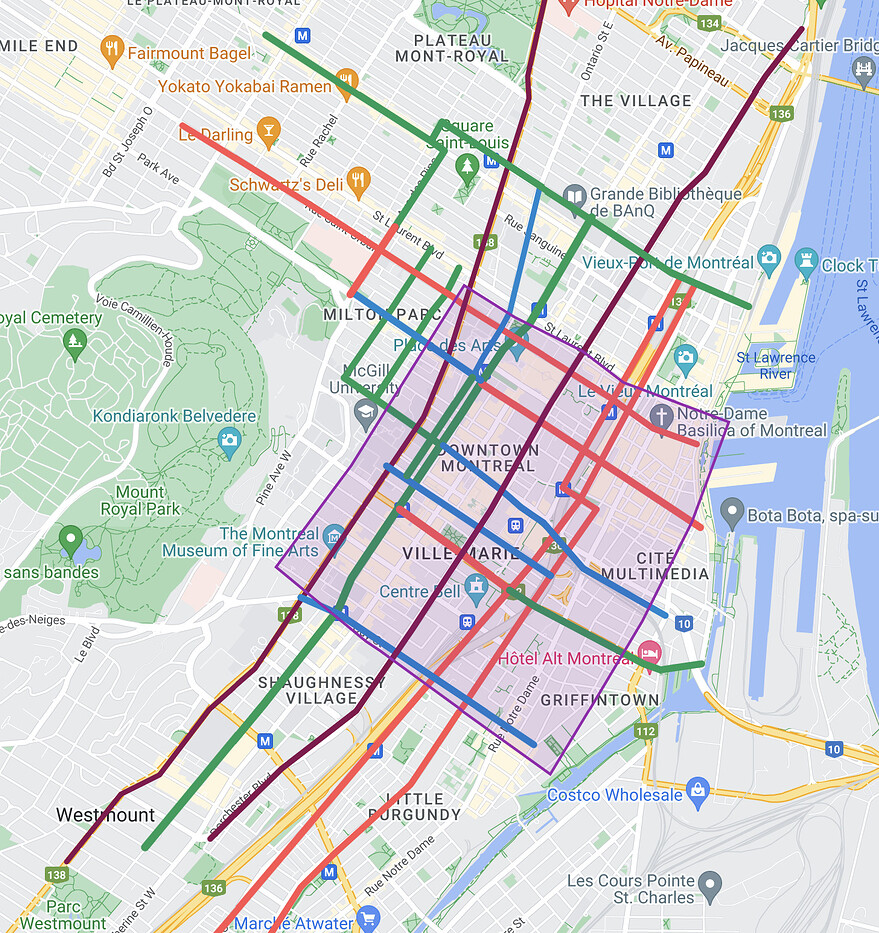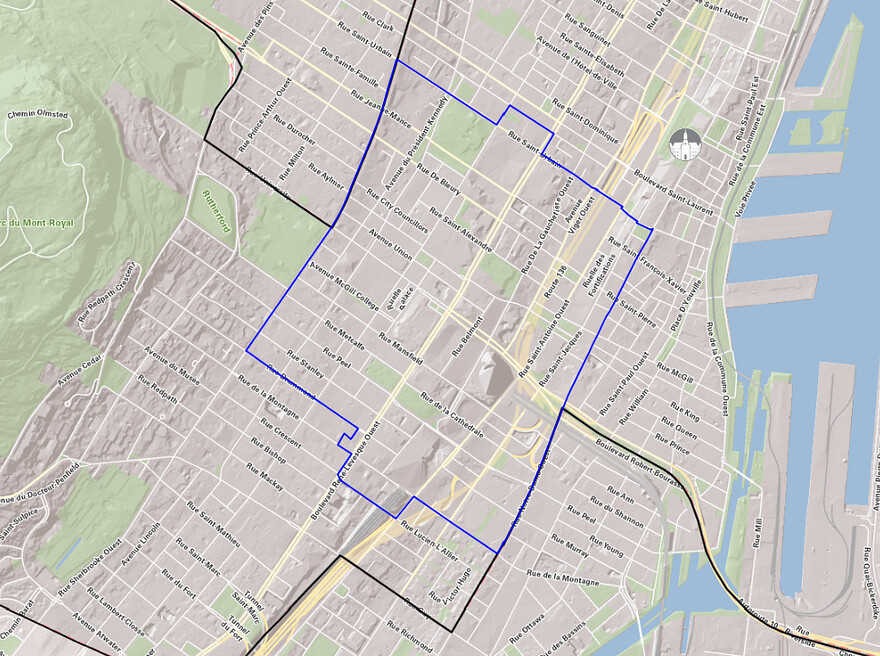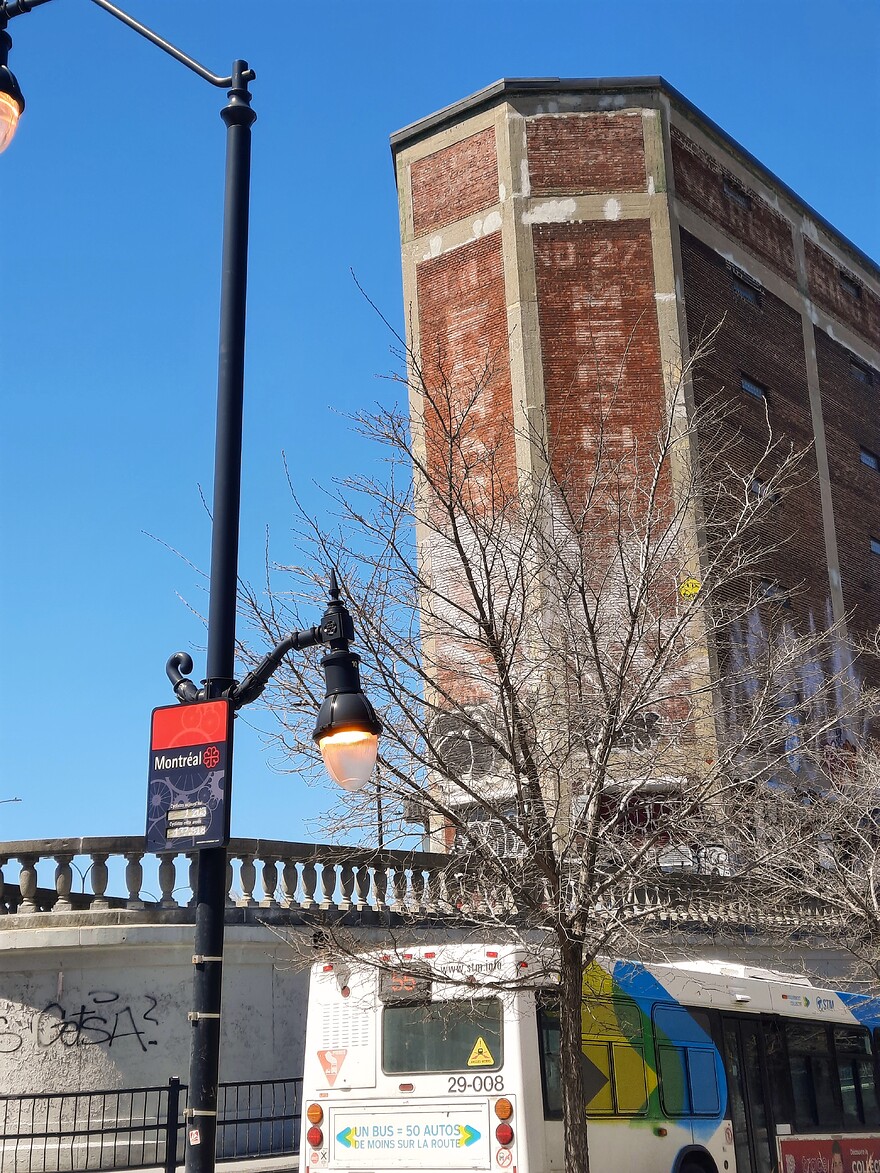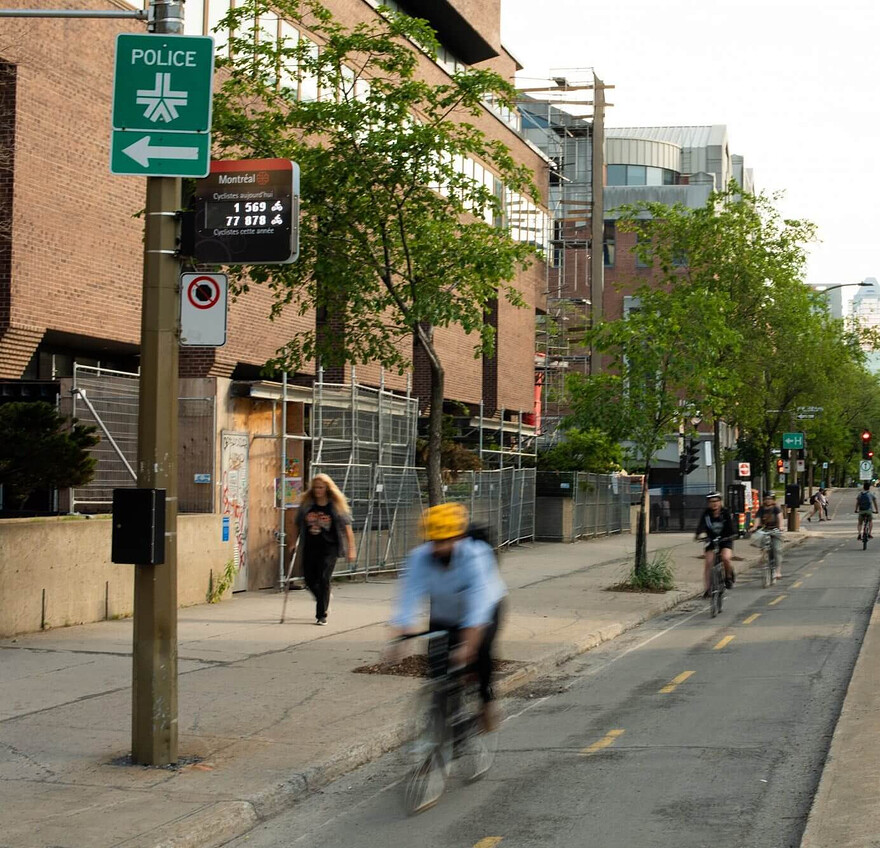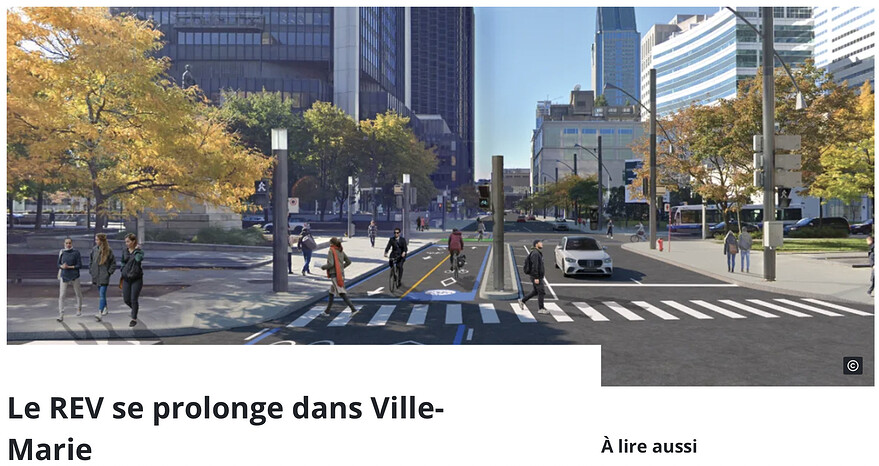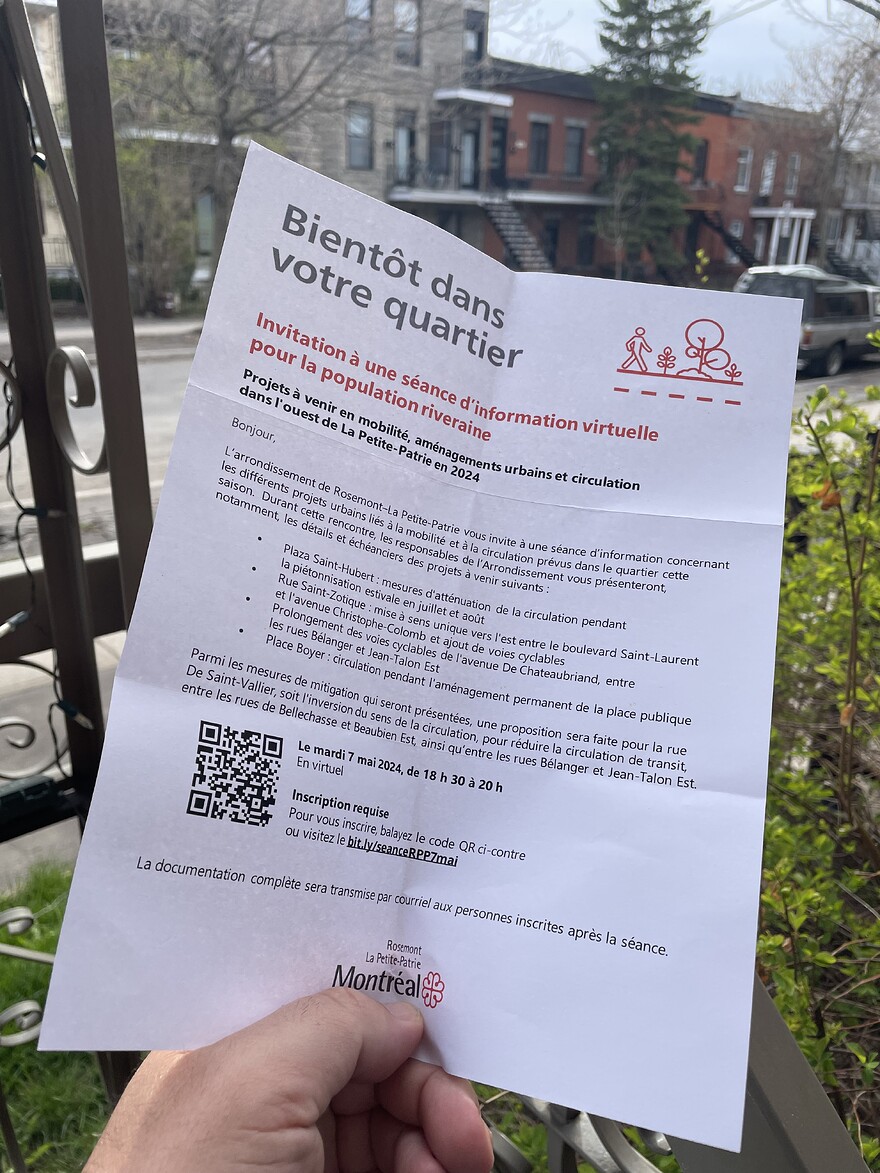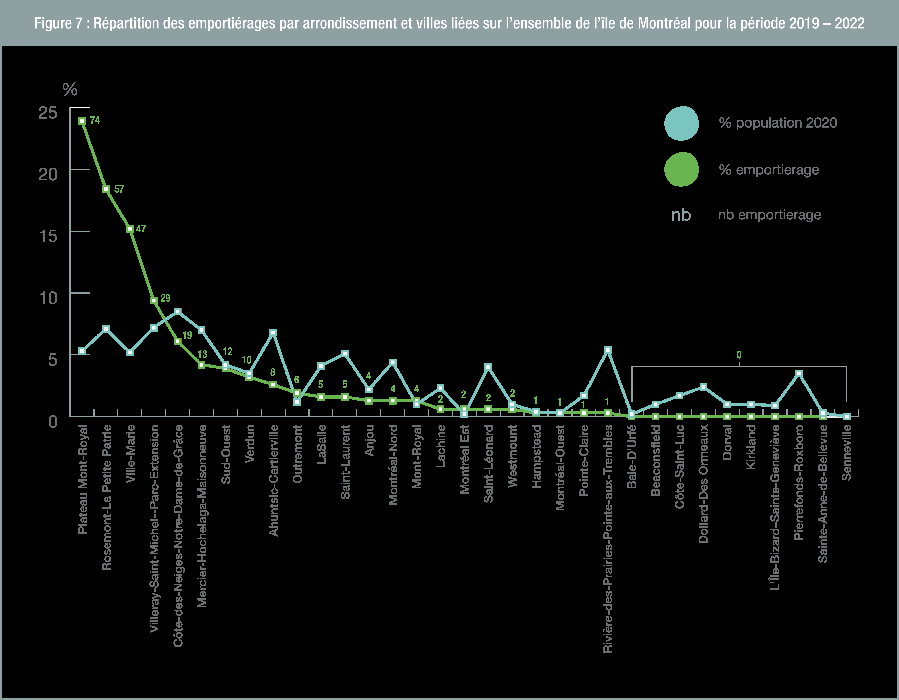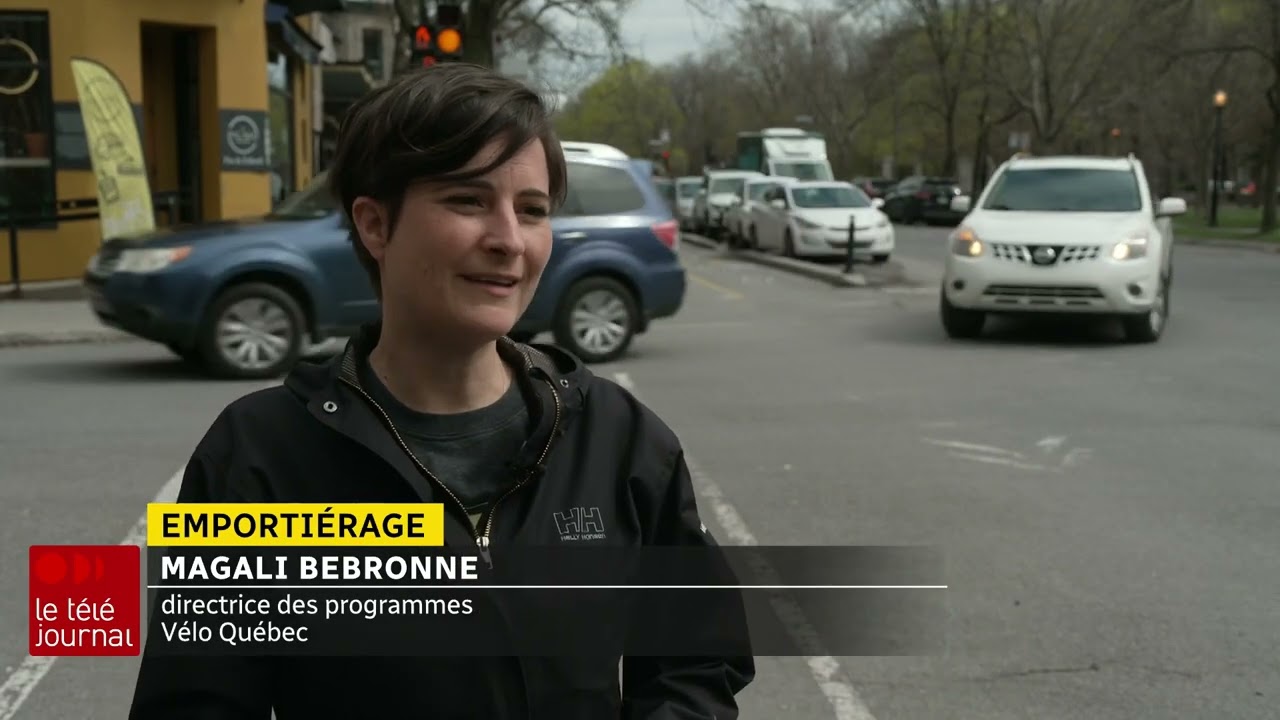Jamais entendu ce nom là. On parle de quoi?
Il ne faut pas se limiter aux rues qui traversent de bord en bord le Centre-Ville, il faut aussi profiter de rues qui convergent vers le Centre-Ville, même si elles s’y terminent là, car le C-V est une destination en soi. Exemples:
1- Ontario qui devient président Kennedy
2- University qui arrête à Maisonneuve alors qu’on peut la continuer au Sud jusqu’à Saint-Antoine.
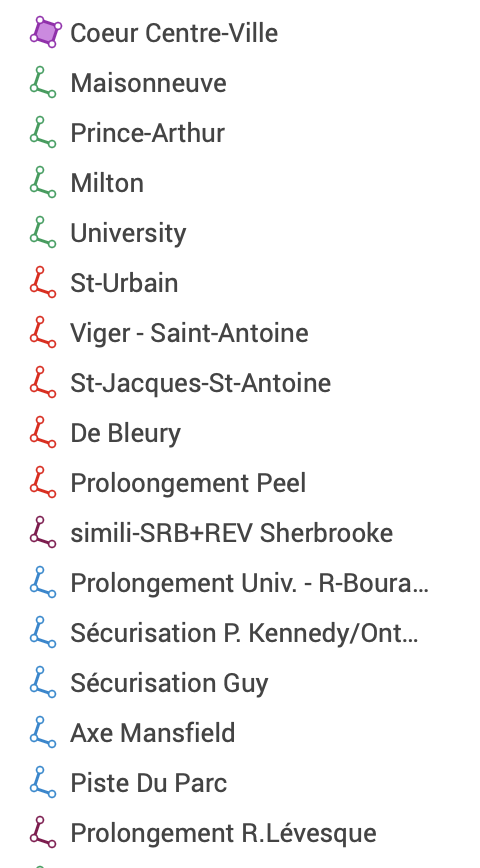
Ce qu’on appelle à tort le centre-ville est en fait le centre des affaires
Centre-Ville n’égale pas arrondissement de Ville-Marie.
Le centre-ville inclut aussi des quartiers du Sud-Ouest et du Plateau, mais exclut Sainte-Marie.
Et c’est vraiment la zone du centre des affaires qui est problématique en terme de réseau cycable
L’entreprise éco-compteur offre l’afficheur compact
Il y a d’ailleurs une image d’un compteur à Montréal (piste sur Berri ou Maisonneuve?)
là depuis des années!
Nouvelle piste cyclable sur St-Zotique entre St-Laurent et Christophe-Colomb. Il semble qu’elle sera fait à l’image de la rue Villeray ou Prince Arthur, c’est à dire il y aura une chaussée partagée vers l’est et une voie cyclable protégée vers l’ouest.
Cet aménagement était initialement prévu pour 2021 si je me rappelle bien mais j’ai entendu dire que quelques commerçants de la Petite Italie y étaient farouchement opposés. Évidemment il y a quelque chose qui a changé.
Je n’ai pu assister qu’à la période de questions. Quelques points intéressants :
- Comme nous le savions, le bidirectionnel est temporaire jusqu’à l’achèvement des travaux majeurs sur Saint-Jacques.
- Les mouvements de vélos seront partiellement protégés des voitures qui tournent. Certaines intersections auront des phases distinctes, d’autres auront des virages à gauche interdits, notamment de Saint Antoine sur de la Cathédrale. À mon avis, l’absence de protection complète contre les virages, surtout si l’on tient compte des conducteurs de banlieue qui empruntent souvent Saint-Antoine, n’est pas une bonne chose pour une piste bidirectionnelle. D’un autre côté, il devrait y avoir moins de feux rouges que sur la rue de Maisonneuve.
- Les travaux ne seront pas terminés avant novembre, mais ils sont confiants de pouvoir les terminer à temps pour l’hiver.
Plusieurs questions ont été posées sur la section de Viger plus à l’est entre le CHUM et Saint-Laurent. La ville travaille apparemment avec les entrepreneurs de la Place des Montréalaises pour essayer de trouver une solution plus sécuritaire cet été, mais il n’y a aucune garantie jusqu’à ce que les travaux soient terminés.
Merci merci!
Je me demande comment sera faites St-Zotique au niveau cyclable entre Saint-Laurent et St-Urbain.
Aussi, je pense la raison pour laquelle Bélanger sera faites juste en peinture cette année et sera protégée en 2025 est à cause des piétonnisation su la Plaza + travaux sur J-talon + travaux sur St-Zotique pour changements sens de circulation.
il y a une page sur le site de la ville qui résume les travaux à venir dans RPP
16e avenue dans Rosemont est un chouchou pour moi. C’est la traverse surélevée qui lui accorde tous ses points !
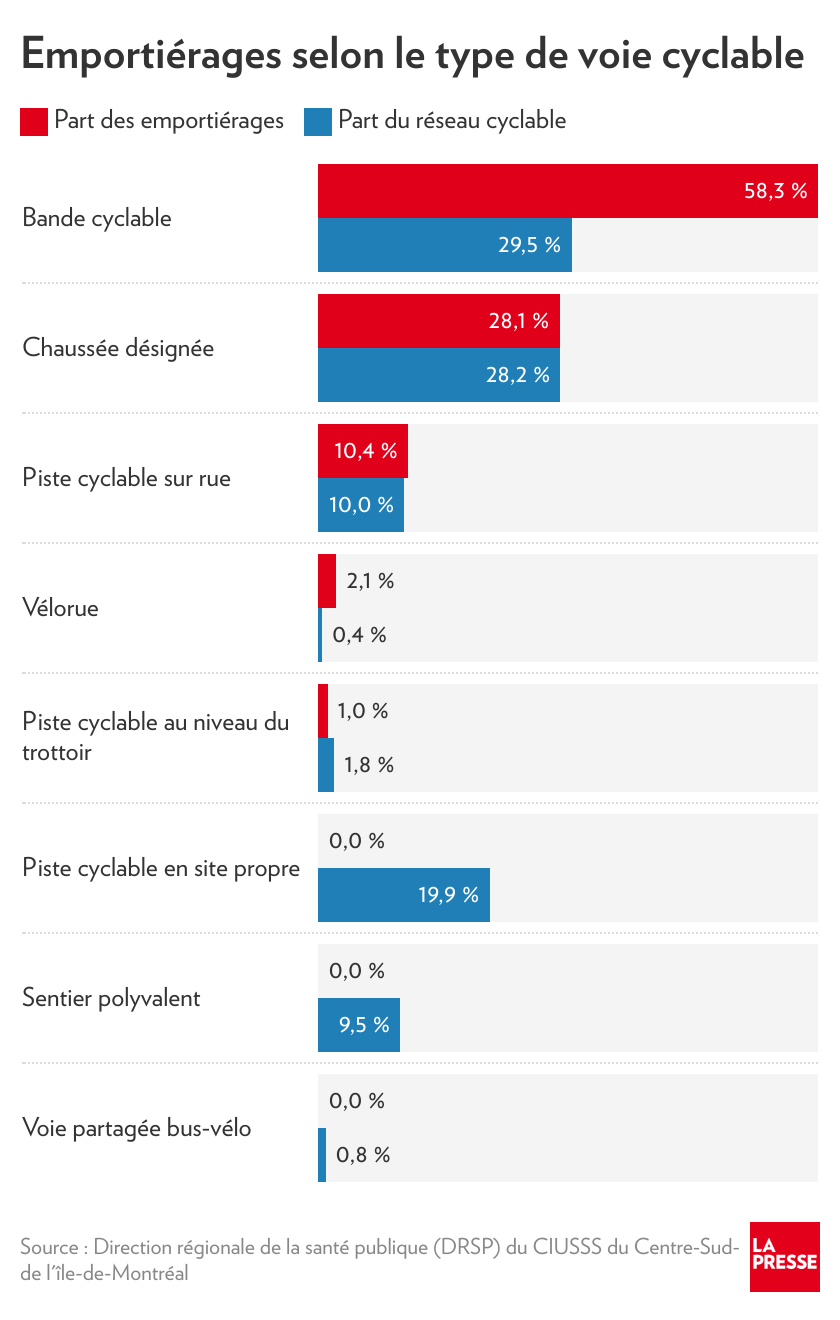
Le rapport de la Direction de la santé publique :
Communiqué de la Direction de la santé publique
Premier portrait des emportiérages sur le territoire montréalais
1 mai 2024
DRSP - Professionnels
La Direction régionale de santé publique du CIUSSS du Centre-Sud-de-l’Île-de-Montréal (DRSP de Montréal) présente son premier Portrait des emportiérages sur le territoire montréalais.
L’emportiérage, défini comme l’action de percuter un cycliste en ouvrant la porte d’un véhicule sans précaution, est responsable de plusieurs incidents par mois sur le territoire montréalais. Ces incidents pourraient pourtant être évités.
Ce portrait sur l’emportiérage s’appuie sur les données enregistrées par le Service de Police de la Ville de Montréal (SPVM) durant la période de janvier 2019 à novembre 2022. Il comprend des analyses des différents cas documentés ainsi que des recommandations pour déployer des interventions en matière de transport actif et sécuritaire, et d’aménagement sécuritaire.
Recommandations de la DRSP :
- Intégrer systématiquement les principes de l’approche Vision Zéro en terme sécurité routière dans la conception des aménagements
- Poursuivre le développement du réseau cyclable montréalais par des aménagements cyclables adaptés au contexte
- Implanter systématiquement des pistes cyclables physiquement séparées de la circulation sur les voies de circulation à haut débit
- Éviter les bandes cyclables sur les collectrices municipales et les artères
- Prioriser l’implantation d’aménagement cyclable dans les quartiers centraux
- Revoir les aménagements cyclables avec stationnements à proximité
- S’assurer que la zone tampon entre la voie cyclable et les espaces de stationnements est d’au moins 50 cm (dans le rapport, c’est 1 m)
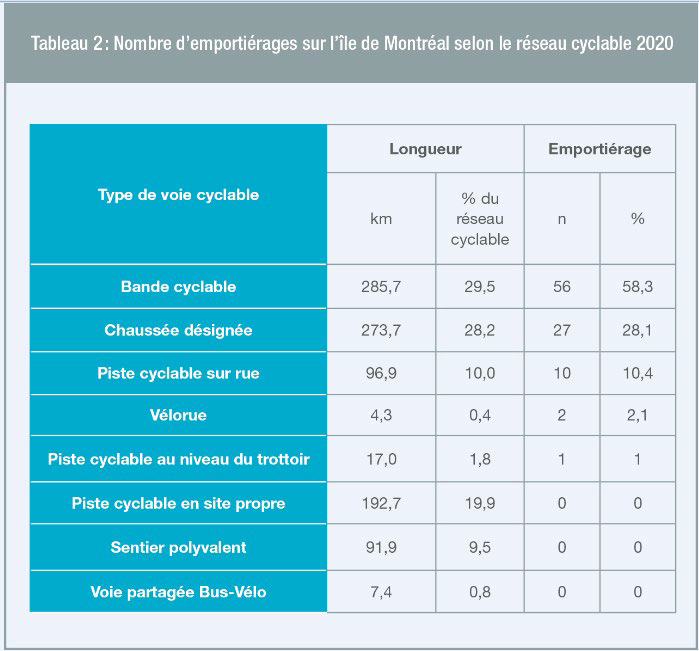
Le nombre de cas d’emportièrages sur le Plateau est le plus élevé
Si ces statistiques ne suffisent pas à convaincre la population de changer nos pistes peinturées en pistes protégées, je ne sais pas ce que ce ça prendra!
De la peinture ce n’est pas une infrastructure ! ![]()
J’espère que la ville va tirer des leçons de cette étude, ça montre bien que les bandes cyclables sont un net négatif pour la sûreté à vélo.
De même, les vélorues sont un concept qui peut marcher, mais un panneau et un chevron par bloc c’est pas assez pour inciter les cyclistes à rester au centre de la voie, sans un marquage fort et continue, le cycliste va être poussé à droite par peur du traffic auto
à ce jour, je ne comprends pas pourquoi on a encore des bandes cyclables entre la voie de circulation et les stationnements, quand ça prends à peu près le même espace pour la déplacer entre le trottoir et le stationnement.
It generally takes up slightly less because the lanes between sidewalk and parking are wider for the doors to open (which the lanes against traffic don’t have here all the time). There are some cases where they give an extra buffer where it would just make sense to push it towards the sidewalk…
Entrevue avec un des auteurs du rapport de la DRSP
![]()
![]() De plus en plus de cas d’emportiérage à Montréal : Entrevue avec François Tessier Rattrapage du 1er mai 2024 : Des nouvelles de la maison Marguerite, et le campement McGill
De plus en plus de cas d’emportiérage à Montréal : Entrevue avec François Tessier Rattrapage du 1er mai 2024 : Des nouvelles de la maison Marguerite, et le campement McGill
Ajout Reportage au Telejournal
